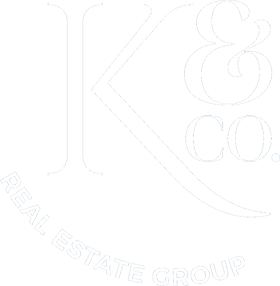Please be sure to look under the Apply Now tab for more available properties that may not be in the MLS or shown here.
Loans
The home loan process can be complex and leaves many clients perplexed by the volume of information required by a lender. Understanding the loan process and working with an experienced and dependable lender is critical. Loan processing probably has the largest impact on the timing and success of a real estate transaction. Being in the right position before you write an offer can make a huge difference in the strength and desirability of the offer you're able to present and can make or break the deal, especially in multiple offer situations.
For sellers, its also critical that your agent is educated in loan guidelines and timing and that they know the right questions to ask of any potential buyers... BEFORE you enter into a contract.
Prequalification
Prequalification is the best way to get started. Ask a lender to analyze your current income, debt and credit history to qualify for a maximum loan amount. The loan amount plus your closing costs, taxes, HOA dues if any, mortgage insurance if any and down payment gives you the maximum sales price you are able to pay for a home. A certificate of prequalification does not mean that the mortgage loan is approved. Loan approval means you are a qualified buyer, ready, willing and able to perform.
FICO
FICO Scoring is a formula for credit risk assessment that is believed to be highly predictive of future payment risk. The borrower's FICO score is derived weighing credit information at a snapshot in time and assessing "points" for each piece of information. The information is taken from a credit bureau file and scores are based on credit information only. By law, an applicant's credit worthiness cannot be judged on race, religion, marital status, gender or nationality. According to Fair Isaac, the information is, therefore, objective, consistent and does not discriminate.
Calculation and Higher Risk Characteristics
The borrower's score is calculated based on assigned numerical values for certain credit characteristics. The higher the overall score the less risk there is for the lender. Some characteristics that detrmine credit are number and age of trade lines, judgments, current level of indebtedness, balance to limit ratios, types of credit such as revolving or installment, usage of credit line, credit inquiries, on time payments, late payments, bankruptcy, non-bankruptcy derogatory public records, charge-offs or loan defaults, repossession, serious delinquency, collections, too many or too few accounts and number of accounts opened in the last 12 months.
FICO Scoring looks at credit patterns over a period of time. In other words, one late payment will not ruin your credit score. However, a history of late payments and high credit balances will have a serious effect on an individual's score.
Down Payments
Down payments vary and on average, most home buyers make down payments in the 3%-20% range. You may choose to make a larger or smaller down payment if a specific amount is not required to qualify for your loan.
PITI
PITI refers to the four elements that make up the monthly payment.
- Principal
Repaying the original loan amount on a monthly basis - Interest
The cost of borrowing the principal amount, repaid on a monthly basis - Taxes
Property taxes paid to a local government agency. - Insurance
Homeowners insurance on the home. Also any mortgage insurance that is paid to protect the mortgage company.
Types of Mortgages
Fixed
A fixed term as well as a fixed interest rate. The interest rate and term are fixed at the start of the mortgage. The monthly amount of the payment of principal and interest will not change during the term of the loan.
Adjustable
Also known as an ARM (Adjustable Rate Mortgage). The interest rate on the mortgage will be adjusted up or down to current interest rate levels. The monthly amount for your principal and interest payment will go up or down with these rate changes. The rate is based on one of several indices that reflect the current cost of money.
Home Equity Line of Credit
Balloon
A balloon is a mortgage that requires a larger-than-usual one-time payment at the end of the term. This can mean your payments are lower in the years before the balloon payment comes due.
Reverse
A reverse mortgage is a special type of loan commonly used by older Americans to convert the equity in their homes into cash. The money obtained through a reverse mortgage can provide seniors with the financial security they need to fully enjoy their retirement years. The reverse mortgage is aptly named because the payment stream is "reversed." Instead of the borrower making monthly payments to a lender, as with a regular first mortgage or home equity loan, a lender makes payments to the borrower. While a reverse mortgage loan is outstanding, the borrower owns the home and holds title to it and does not make any monthly mortgage payments.
APR
The APR reflects the cost of a mortgage loan as a yearly rate. This rate may be higher than the rate stated in the mortgage or deed of trust note because the APR includes, in addition to interest, points, fees, and other credit costs.The lender is required, usually within three days of receiving a loan application, to give or mail to the borrower a Truth-in-Lending statement that will disclose the "annual percentage rate" (APR). The annual percentage rate (APR) can be a valuable tool to help shop for a mortgage, but only when you know how to use it. An APR measures the total cost of the loan (including interest, points and fees) and compares this cost to the amount borrowed.
How Long Does a Buyer Need to Wait After a Bankruptcy, Foreclosure or Short-Sale Before Obtaining Financing?
In this economy, we hear this question often. Below is a summary of the waiting period to obtain financing post Bankruptcy, Foreclosure or Short Sale.
Fannie Mae
- Ch. 7 BK: 4 years from discharge date
- Ch. 13 BK: 2 years from discharge date or 4 years from dismissal date, 5 years if more than one filing within the past 7 yearsmultiple filings
- Foreclosure: 7 years from completion
- Deed-In-Lieu and Short Sale: 4 years from completion date
FHA
- Ch. 7 BK: 2 years from discharge date
- Ch. 13 BK: 1 year from payout period, permission from court required and payment and performance must be satisfactory
- Foreclosure or Deed-In-Lieu: 3 years from completion date
- Short Sale: 3 years from completion date
VA
- Ch. 7 BK: 2 years from discharge date
- Ch. 13 BK: 1 year from payout period, permission from court and payment and performance must be satisfactory
- Foreclosure: 2 years from completion date
- Short Sale: No information given, assume 2 years from completion date
USDA - RURAL
- Ch. 7: 3 years from discharge date
- Ch. 13 BK: 1 year of the payout must elapse and payment performance must be satisfactory - buyer must receive permission from the court to enter into a mortgage
- Foreclosure: 3 years from completion date



